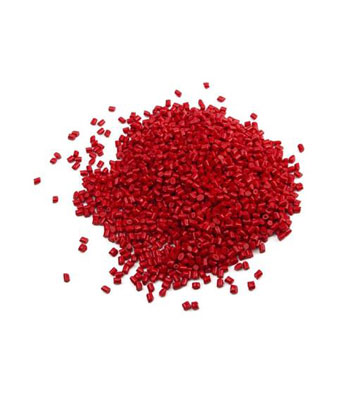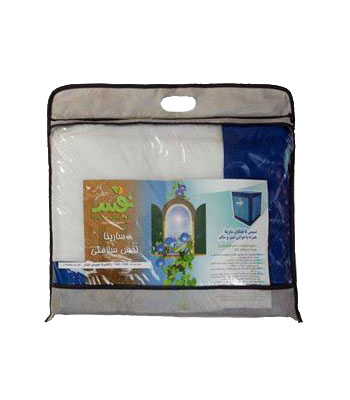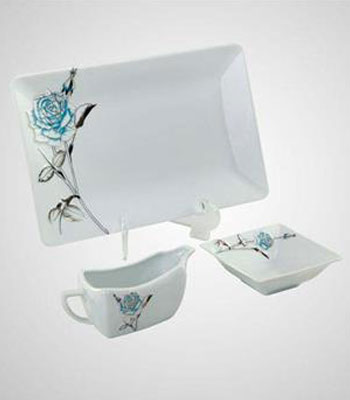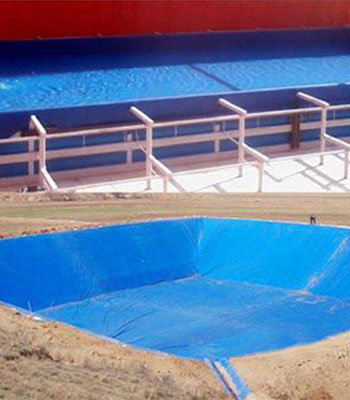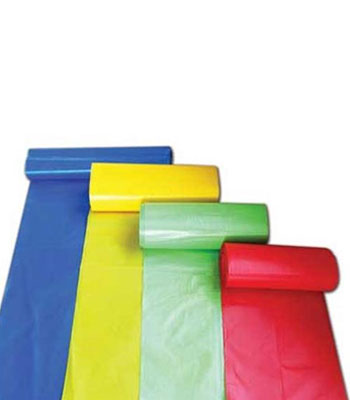Antibacterial ABS Granule
$0.00Introduction
ABS polymer is composed of three different monomers, including Acrylonitrile, Butadiene and Styrene, in which each monomer gives unique properties to the final product. Some of these properties are transparency, flexibility, and polarity and chemical resistance which are created by styrene, butadiene, and acrylonitrile, respectively. Therefore, by changing the percentage of each monomer in composition, several grades of ABS can be produced. This material has different applications such as plastic parts that are used in home appliances. ABS masterbatch granules are produced using modified antibacterial nanomaterials. To gain better properties which facilitate the use of ABS in fabrication of components with antibacterial feature, this material can also be mixed with other polymers, such as polyvinyl chloride or polycarbonate.
Antibacterial ABS Granule
$0.00Introduction
ABS polymer is composed of three different monomers, including Acrylonitrile, Butadiene and Styrene, in which each monomer gives unique properties to the final product. Some of these properties are transparency, flexibility, and polarity and chemical resistance which are created by styrene, butadiene, and acrylonitrile, respectively. Therefore, by changing the percentage of each monomer in composition, several grades of ABS can be produced. This material has different applications such as plastic parts that are used in home appliances. ABS masterbatch granules are produced using modified antibacterial nanomaterials. To gain better properties which facilitate the use of ABS in fabrication of components with antibacterial feature, this material can also be mixed with other polymers, such as polyvinyl chloride or polycarbonate.
Antibacterial ABS Granule
$0.00Introduction
ABS polymer is composed of three different monomers, including Acrylonitrile, Butadiene and Styrene, in which each monomer gives unique properties to the final product. Some of these properties are transparency, flexibility, and polarity and chemical resistance which are created by styrene, butadiene, and acrylonitrile, respectively. Therefore, by changing the percentage of each monomer in composition, several grades of ABS can be produced. This material has different applications such as plastic parts that are used in home appliances. ABS masterbatch granules are produced using modified antibacterial nanomaterials. To gain better properties which facilitate the use of ABS in fabrication of components with antibacterial feature, this material can also be mixed with other polymers, such as polyvinyl chloride or polycarbonate.
Antibacterial Air Filter for Evaporative Cooler
$0.00Introduction
A particulate air filter is a device composed of fibrous materials which removes solid particulates such as dust, pollen, mold, and bacteria from the air. Antibacterial air filters are widely used to prevent the growth of bacteria inside the evaporative coolers; the growth of bacteria is attributed to the wet environment inside the coolers. By addition of silver nanoparticles to the filter cloth, silver ions are released within its structure and prevent the growth of bacteria. The concentration of silver ion in this product is 165 ppm.
Antibacterial Air Filter for Evaporative Cooler
$0.00Introduction
A particulate air filter is a device composed of fibrous materials which removes solid particulates such as dust, pollen, mold, and bacteria from the air. Antibacterial air filters are widely used to prevent the growth of bacteria inside the evaporative coolers; the growth of bacteria is attributed to the wet environment inside the coolers. By addition of silver nanoparticles to the filter cloth, silver ions are released within its structure and prevent the growth of bacteria. The concentration of silver ion in this product is 165 ppm.
Antibacterial Air Filter for Evaporative Cooler
$0.00Introduction
A particulate air filter is a device composed of fibrous materials which removes solid particulates such as dust, pollen, mold, and bacteria from the air. Antibacterial air filters are widely used to prevent the growth of bacteria inside the evaporative coolers; the growth of bacteria is attributed to the wet environment inside the coolers. By addition of silver nanoparticles to the filter cloth, silver ions are released within its structure and prevent the growth of bacteria. The concentration of silver ion in this product is 165 ppm.
Antibacterial Ceramic
$0.00Introduction
Ceramics due to having excellent chemical stability, as well as good appearance are widely used in different places such as hospitals and buildings. Ceramics, unfortunately, do not have antibacterial effect inherently, and the microorganisms reproduce easily on their surfaces, especially in wet environments. Regarding this, the need for frequent washing and the use of disinfectants is necessary. However, the use of these materials not only causes respiratory problems but also leads to the loss of cement and mortar between the ceramics. Therefore, the use of a ceramic which has inherent antibacterial properties can be effective in solving these problems. Zin oxide nanoparticles have antibacterial effect which can kill many types of bacteria. These nanoparticles penetrate into the cell walls of bacteria and microorganisms and prevent their growth and reproduction. These nanoparticles can be mixed with ceramic glaze as an additive.
Antibacterial Ceramic
$0.00Introduction
Ceramics due to having excellent chemical stability, as well as good appearance are widely used in different places such as hospitals and buildings. Ceramics, unfortunately, do not have antibacterial effect inherently, and the microorganisms reproduce easily on their surfaces, especially in wet environments. Regarding this, the need for frequent washing and the use of disinfectants is necessary. However, the use of these materials not only causes respiratory problems but also leads to the loss of cement and mortar between the ceramics. Therefore, the use of a ceramic which has inherent antibacterial properties can be effective in solving these problems. Zin oxide nanoparticles have antibacterial effect which can kill many types of bacteria. These nanoparticles penetrate into the cell walls of bacteria and microorganisms and prevent their growth and reproduction. These nanoparticles can be mixed with ceramic glaze as an additive.
Antibacterial Ceramic
$0.00Introduction
Ceramics due to having excellent chemical stability, as well as good appearance are widely used in different places such as hospitals and buildings. Ceramics, unfortunately, do not have antibacterial effect inherently, and the microorganisms reproduce easily on their surfaces, especially in wet environments. Regarding this, the need for frequent washing and the use of disinfectants is necessary. However, the use of these materials not only causes respiratory problems but also leads to the loss of cement and mortar between the ceramics. Therefore, the use of a ceramic which has inherent antibacterial properties can be effective in solving these problems. Zin oxide nanoparticles have antibacterial effect which can kill many types of bacteria. These nanoparticles penetrate into the cell walls of bacteria and microorganisms and prevent their growth and reproduction. These nanoparticles can be mixed with ceramic glaze as an additive.
Antibacterial Chinawear with Hydrophobic Coating
$0.00Introduction
Washing porcelain dishes after a meal is a tedious work. During washing, greasy porcelain dishes are very slippery in hand. Also, in some cases fat stains remain after washing. Moreover, surface of a dish due to direct contact with the hands or leftovers is a good place for growth of bacteria and fungi. The aforementioned problems can be obviated with the aid of nanotechnology; to do this, chinaware with hydrophobic and antibacterial surfaces are produced by the addition of silicon and zinc nanoparticles, respectively. The chinaware produced by this company are classified in two different groups:
- Hydrophobic chinawear
- Antibacterial chinawear
Antibacterial Chinawear with Hydrophobic Coating
$0.00Introduction
Washing porcelain dishes after a meal is a tedious work. During washing, greasy porcelain dishes are very slippery in hand. Also, in some cases fat stains remain after washing. Moreover, surface of a dish due to direct contact with the hands or leftovers is a good place for growth of bacteria and fungi. The aforementioned problems can be obviated with the aid of nanotechnology; to do this, chinaware with hydrophobic and antibacterial surfaces are produced by the addition of silicon and zinc nanoparticles, respectively. The chinaware produced by this company are classified in two different groups:
- Hydrophobic chinawear
- Antibacterial chinawear
Antibacterial Chinawear with Hydrophobic Coating
$0.00Introduction
Washing porcelain dishes after a meal is a tedious work. During washing, greasy porcelain dishes are very slippery in hand. Also, in some cases fat stains remain after washing. Moreover, surface of a dish due to direct contact with the hands or leftovers is a good place for growth of bacteria and fungi. The aforementioned problems can be obviated with the aid of nanotechnology; to do this, chinaware with hydrophobic and antibacterial surfaces are produced by the addition of silicon and zinc nanoparticles, respectively. The chinaware produced by this company are classified in two different groups:
- Hydrophobic chinawear
- Antibacterial chinawear
Antibacterial Geomembrane
$0.00Introduction
Geomembrane is a very low permeable synthetic membrane which is used in various geotechnical engineering projects to control water or gas leakage. It has been confirmed that for this application, geomembranes are more efficacious than other traditional products such as concrete, asphalt, and compacted clay. This product has a wide range of properties, i.e. physical, mechanical and chemical resistance, to protect our environment and water resources. It is worth mentioning that the antibacterial activity of polymers reinforced with silver nanoparticles is stable and its high antibacterial efficiency has been observed against different species of bacteria. Silver ions and its compounds can kill a wide range of bacteria, while they have no toxic effect to the human body. Therefore, the use of silver in different forms is a common method of protection against bacteria.
Antibacterial Geomembrane
$0.00Introduction
Geomembrane is a very low permeable synthetic membrane which is used in various geotechnical engineering projects to control water or gas leakage. It has been confirmed that for this application, geomembranes are more efficacious than other traditional products such as concrete, asphalt, and compacted clay. This product has a wide range of properties, i.e. physical, mechanical and chemical resistance, to protect our environment and water resources. It is worth mentioning that the antibacterial activity of polymers reinforced with silver nanoparticles is stable and its high antibacterial efficiency has been observed against different species of bacteria. Silver ions and its compounds can kill a wide range of bacteria, while they have no toxic effect to the human body. Therefore, the use of silver in different forms is a common method of protection against bacteria.
Antibacterial Geomembrane
$0.00Introduction
Geomembrane is a very low permeable synthetic membrane which is used in various geotechnical engineering projects to control water or gas leakage. It has been confirmed that for this application, geomembranes are more efficacious than other traditional products such as concrete, asphalt, and compacted clay. This product has a wide range of properties, i.e. physical, mechanical and chemical resistance, to protect our environment and water resources. It is worth mentioning that the antibacterial activity of polymers reinforced with silver nanoparticles is stable and its high antibacterial efficiency has been observed against different species of bacteria. Silver ions and its compounds can kill a wide range of bacteria, while they have no toxic effect to the human body. Therefore, the use of silver in different forms is a common method of protection against bacteria.
Antibacterial Hospital Waste Bag
$0.00Introduction
The use of plastic bags is a convenient and hygienic way to collect waste. Plastic bags are very lightweight, and are especially suitable for wet rubbish like food waste. The waste bags containing food waste and other spoilable materials are a suitable place for growth of bacteria which can cause contamination. The antibacterial nanoparticles prevent the growth of microorganisms which lead to contamination. The antibacterial nanoparticles prevent growth of microorganisms which give birth to spoilage and contamination. Zinc oxide nanoparticles show a strong antibacterial activity against the pathogenic bacteria such as E. coli and S. aureus. Addition of these kinds of nanoparticles to the waste bags can create antibacterial properties in them.
Antibacterial Hospital Waste Bag
$0.00Introduction
The use of plastic bags is a convenient and hygienic way to collect waste. Plastic bags are very lightweight, and are especially suitable for wet rubbish like food waste. The waste bags containing food waste and other spoilable materials are a suitable place for growth of bacteria which can cause contamination. The antibacterial nanoparticles prevent the growth of microorganisms which lead to contamination. The antibacterial nanoparticles prevent growth of microorganisms which give birth to spoilage and contamination. Zinc oxide nanoparticles show a strong antibacterial activity against the pathogenic bacteria such as E. coli and S. aureus. Addition of these kinds of nanoparticles to the waste bags can create antibacterial properties in them.
Antibacterial Hospital Waste Bag
$0.00Introduction
The use of plastic bags is a convenient and hygienic way to collect waste. Plastic bags are very lightweight, and are especially suitable for wet rubbish like food waste. The waste bags containing food waste and other spoilable materials are a suitable place for growth of bacteria which can cause contamination. The antibacterial nanoparticles prevent the growth of microorganisms which lead to contamination. The antibacterial nanoparticles prevent growth of microorganisms which give birth to spoilage and contamination. Zinc oxide nanoparticles show a strong antibacterial activity against the pathogenic bacteria such as E. coli and S. aureus. Addition of these kinds of nanoparticles to the waste bags can create antibacterial properties in them.



